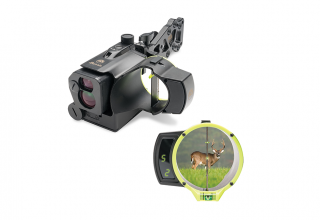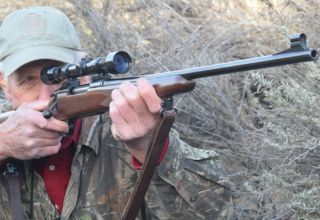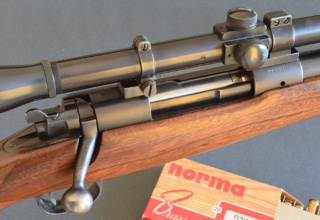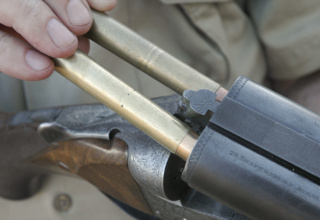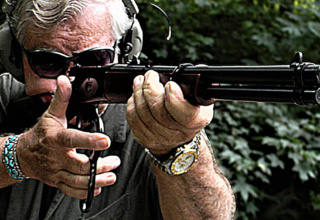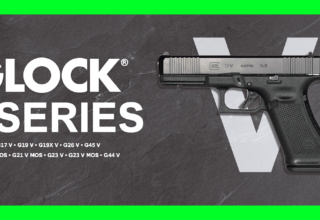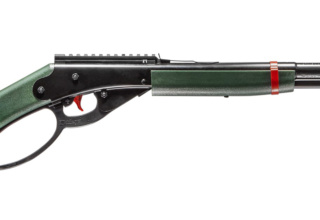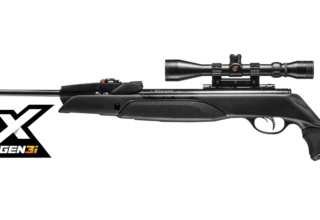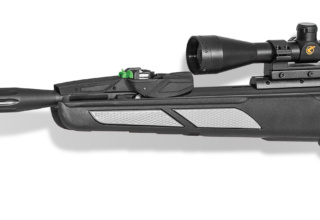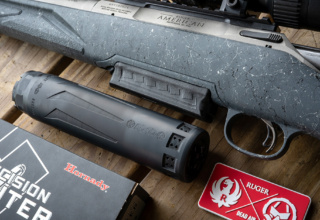Some rifle loads are now legal for deer hunts in traditional “shotgun only” areas. Do they have an edge?
by Wayne van Zwoll
Bill’s Auto 5 was empty, and Harvey’s 11-48 had chambered its last shell. The buck swung wide on the far corner of the field and paused. Hiking his shotgun’s bead well above the animal’s back, Harvey sent his remaining slug. During its languorous flight, the Remington came out of recoil. Harvey saw the deer buckle before the whup! of impact floated back.
In those days, the long arcs of rifle bullets were deemed a hazard in southern Michigan’s heavily populated patchwork of small farms. There were no rifled shotguns. Harvey’s 16-bore tube had the fixed modified choke he used hunting pheasants. Hunters who could afford a “deer gun” sprung for Ithaca’s 37 Deerslayer pump or Browning’s Auto 5 Buck Special, with open sights on a short, cylinder-bored barrel. Now, 60 years after Harvey counted 147 paces to his buck, some states that had nixed rifles are permitting their use. Whitetails must be packing to emigrate, right?
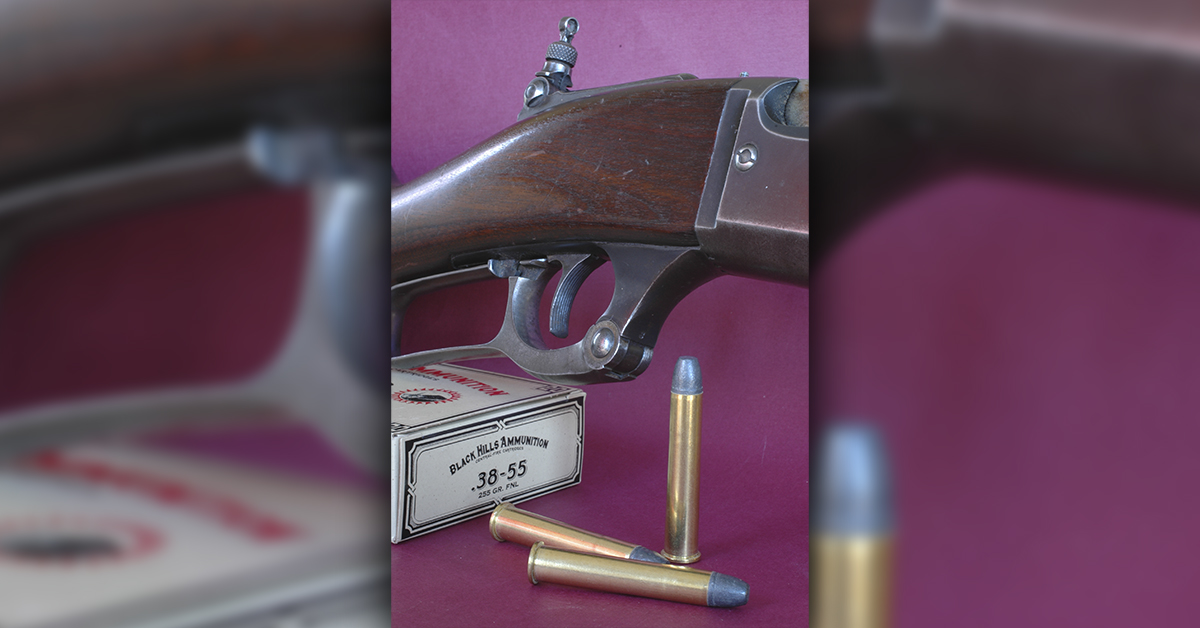
Well, yes and no. Arguably, Harvey’s was an irresponsible shot. He and Bill had missed that deer nine times at shorter range! When, offhand without sights, you can consistently hit deer vitals at even 100 yards, it’s your day to enter lotteries.
In the West, and across crop-fields nationwide, hunters with scoped rifles routinely kill deer 300 yards away. But they’re shooting from solid positions with flat-shooting, bottle-neck rounds. In “shotgun-only” country, original concerns over safety remain. So new rules permit only straight-case rifle ammo—cartridges whose relatively slow, large-diameter bullets trace steep arcs and don’t sail as far as those from a .270 or a .30-06.

The Foster slugs Bill and Harvey used are still available but acceding to sabot slugs from rifled bores. They’re as accurate as bullets from many traditional deer rifles, and they hit as hard at the ranges most whitetails are killed. Ballistically superior to Fosters, they fly flatter and bring lethal energy farther.
The difference between straight-walled rifle cartridges and current slug loads, in modern firearms with equivalent sights, may not be as great as many hunters think.
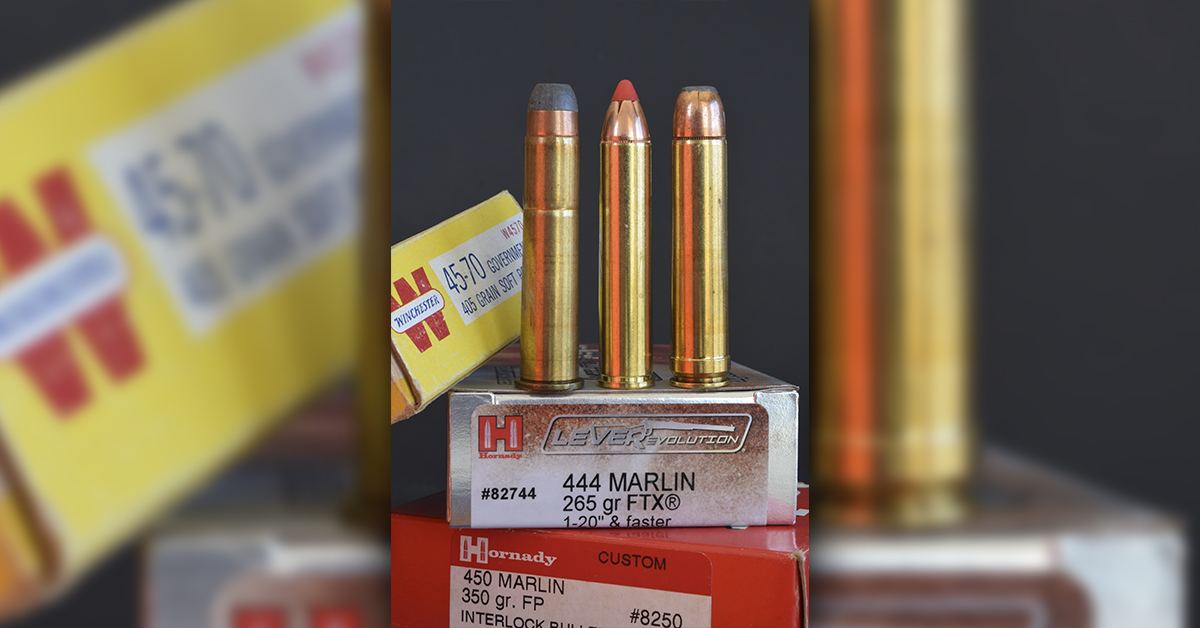
Improving on Pumpkin Balls
Karl Foster designed his shotgun slug stateside in the 1930s, three decades after German gun guru Wilhelm Brenneke fashioned a finned slug with two card wads and a felt wad screwed to its base. Foster gave his a hollow base, a round, solid nose, and a shank with slanted fins. While the fins no doubt put “rifled” in the name, they don’t impart significant spin. Instead, they ease the slug’s passage through chokes. Its base cavity makes a Foster slug front-heavy. It flies quite straight without spinning, like a dart or a shuttle cock. Unlike Captain Minie’s rifle bullet, it can’t expand to seal the bore, as wads block the gas.
Since my youth, standard 12-bore Foster loads have featured 438-grain slugs clocking 1,600 fps. They match the speeds of 350-grain 16-gauge Fosters and 325-grain 20-gauge. Incidentally, weights are commonly given in ounces: 1, 4/5, and 3/4 for 12, 16, and 20. In 2 ¾-inch magnum 12s, heavier 1 ¼-ounce (547-grain) slugs leave at 1,520 fps; they get back up to 1,600 in 3-inch hulls. The 20-bore wrings 1,680 fps from its payload in a 3-inch shell. A 109-grain .410 Foster leaves at 1,775 fps, but with just 770 ft-lbs.
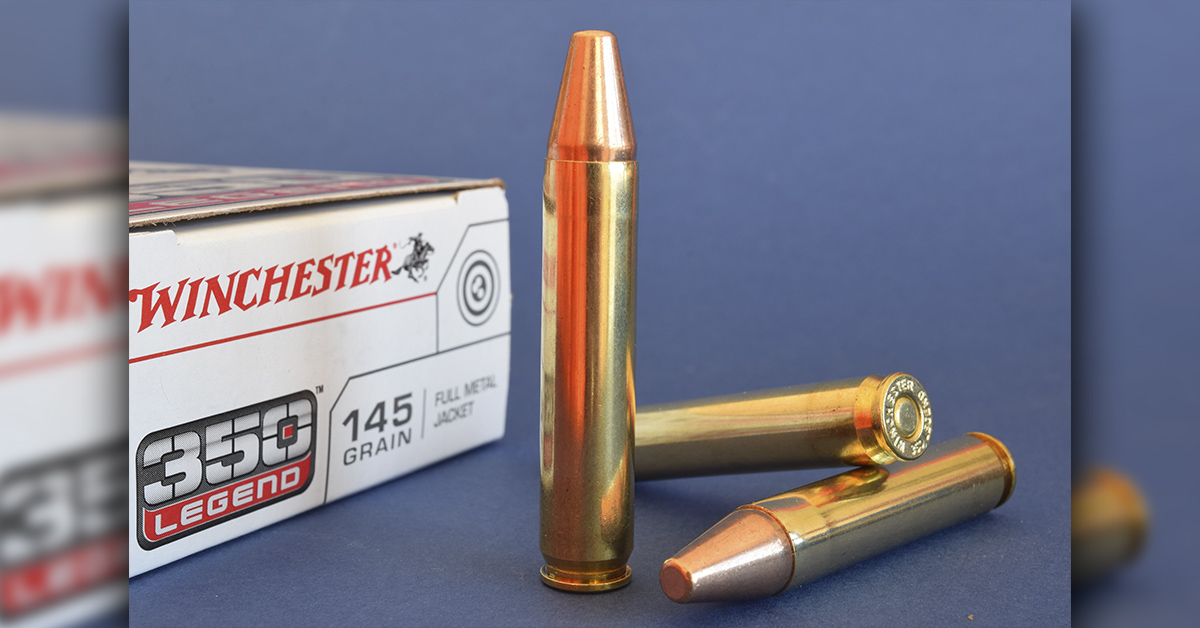
On the charts, a 2 ¾-inch magnum 12 slug load matches the punch of a .30-30 to 125 yards. You could insist it hits harder, as velocity dominates weight in energy calculations that may not mirror killing effect. In my view, it’s the best load if you’re using Fosters. The 16-bore Foster, which brings 750 ft-lbs past 100 yards, takes deer cleanly. A 20-gauge Foster finds its limit nearer the muzzle.
Foster slugs are hardly aerodynamic. Velocity loss of up to 35 percent in the first 100 yards drains half their oomph. A .410 slug shrugs 60 percent of its thrust getting that far!
Foster slugs do not mate well with the rifled barrels developed for sabot loads.

Shotguns That Stretch
“Sabot” (SAY-bow) is French for a projectile inside a projectile. Sabot slugs snuggle inside bore-diameter capsules spun in rifled bores. The capsules fall away in flight. Lighter than Foster slugs, sabot missiles can be hurled faster. Ballistically superior, they fly flatter and better retain energy. Because they don’t contact the bore, they can be of hard material for deep penetration.
California-based Ballistics Research Institute developed an early sabot load with an hour-glass-shaped slug in a plastic sleeve. I found it exceedingly accurate in a Benelli auto. Winchester bought BRI.

In 1993, the Lightfield Hybrid emerged from a New Jersey shop. Remington followed with a 50-caliber Copper Solid sabot. Hornady’s first effort paved the way for its FTX and MonoFlex sabots, plus a 325-grain Interlock that brings 1,000 ft-lbs past 200 yards. In 1997, Federal put the Barnes Expander MZ muzzleloading bullet in a sabot sleeve. PMC joined the party. Winchester’s 385-grain Partition Gold at 1,900 fps reached 200 yards with 1,500 foot-pounds, trumping a .243!
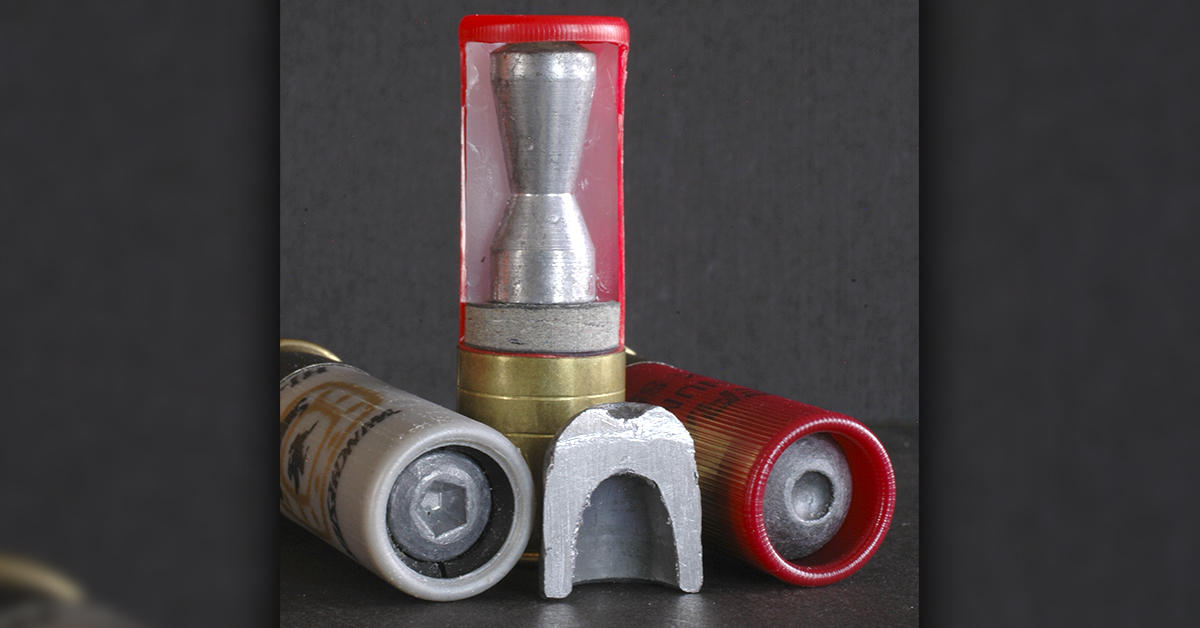
Typically, bores for sabot slugs are rifled 1-turn-in-28 to 1-turn-in-35 inches. It’s no trick to print sub-3-minute groups at 100 yards – accuracy once deemed acceptable in popular whitetail rifles. Hewing to the modest pressure limits imposed by shotguns, sabot slugs still manage to cut flat arcs. Zeroed at 100 yards, the sleekest stay within 2 vertical inches of sight-line to 125 yards.
Incidentally, despite their weight and diameter, neither Foster nor sabot slugs are “brush-busters.” In my trials with slugs and bullets on sagebrush-screened targets, deflection varied. On average, 12-gauge Fosters resisted wild deflection better than did lightweight, high-speed rifle bullets like the .243, but few centered targets 2 feet behind the screens. Holes from slugs and bullets of all diameters showed tipping.
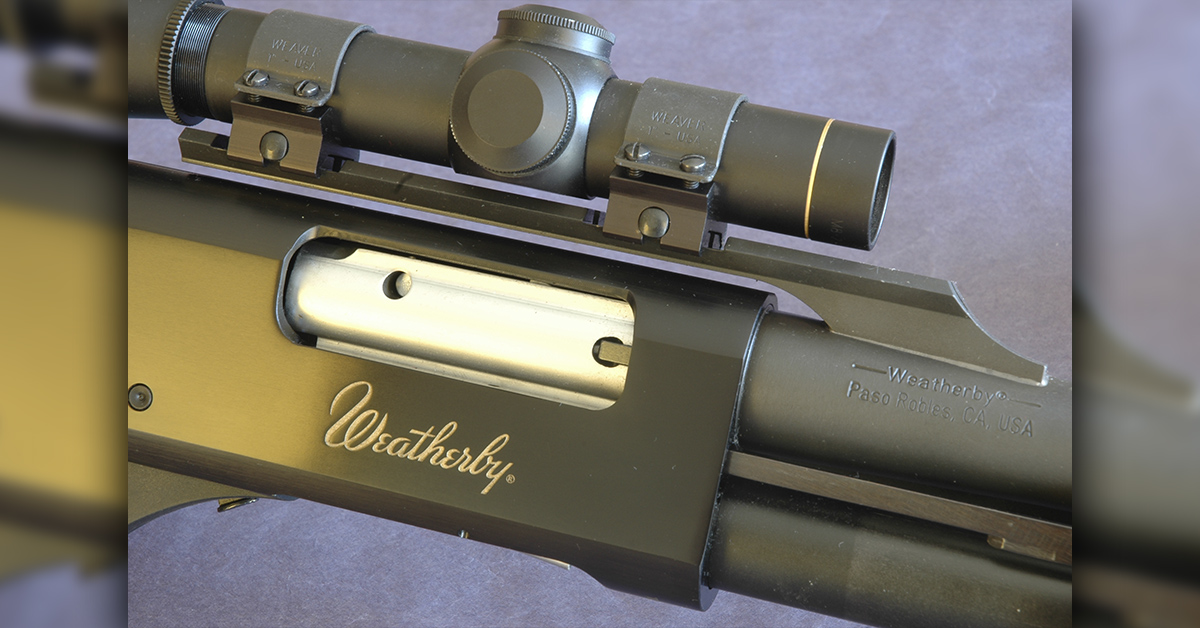
Straight, in Sum
Straight-walled rifle rounds currently loaded range in age from the .44-40 and .45-70 (circa 1873) to the .350 Legend (as recent as Covid). Sales of Winchester’s ’73 lever rifle prompted Colt to barrel its Single Action Army revolver to .44-40. The weak action of the Army’s “Trapdoor” Springfield held .45-70 loads to original black powder pressures. The .38-55 offered a medium-bore option in 1884, with 255-grain bullets at 1,320 fps.
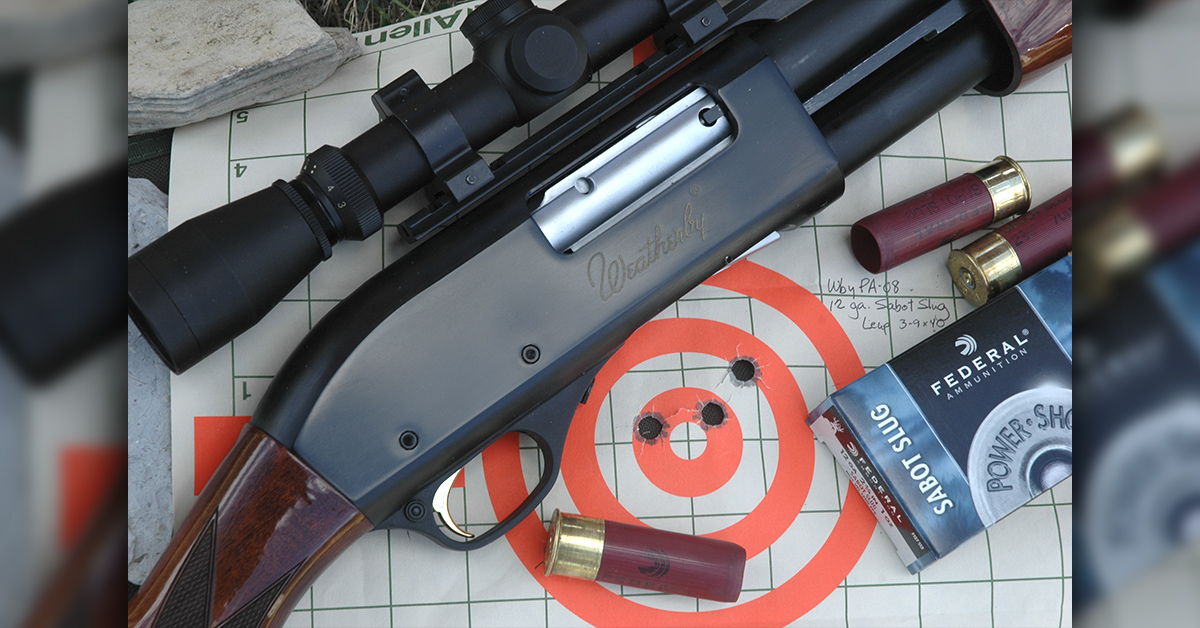
One of the 20th century’s first “straight” cartridges, Winchester’s mighty .405, appeared in 1904. With 300-grain bullets at 2,200 fps, it became Teddy Roosevelt’s “Big Medicine.” Winchester fielded the .401 Self-Loading in 1910. With 200-grain bullets at 2,135 fps, it hit much harder than the .351 with 180s (in the 07 auto, predecessor to the Model 10). By the 1930s, however, bottle-necked rounds dominated the hunting market. Straight-walled cartridges dating the post-Civil War market hunting era fell away, one by one. In 1955 Elmer Keith, with Remington and Smith & Wesson, announced the .44 Magnum. Four years later, it showed its real muscle in Ruger’s Deerstalker carbine. Dick Casull upped the ante with his .454.
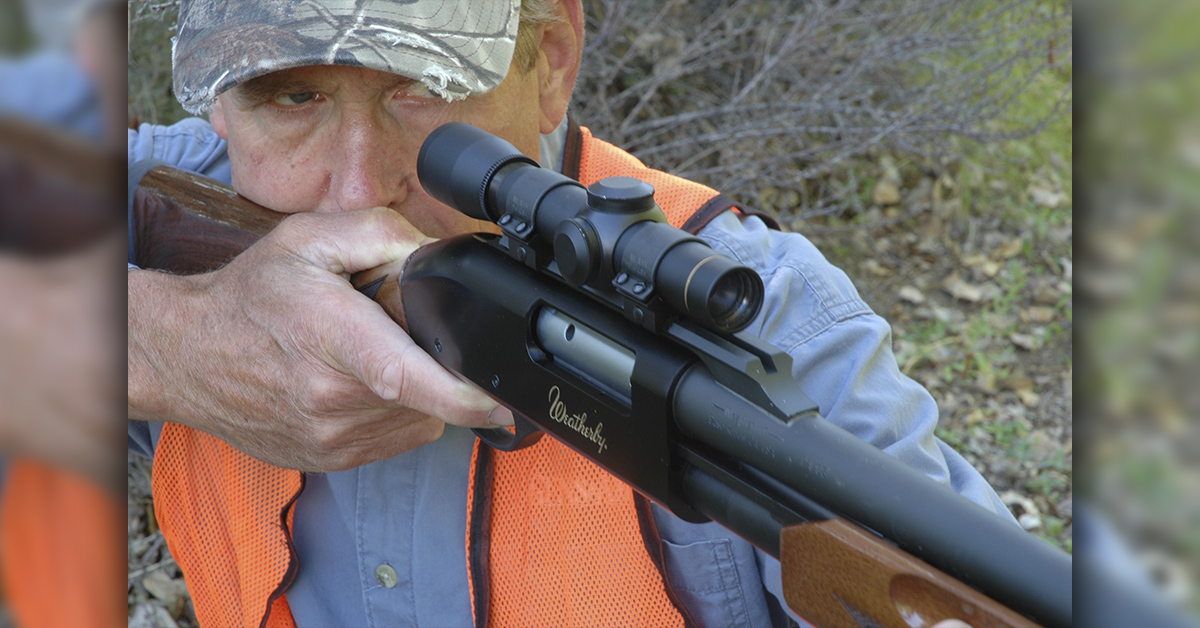
Remington collaborated with Marlin on its .444, announced in 1964 with 240-grain .44 Magnum bullets at 2,400 fps. A better 265-grain load followed. The .375 Winchester for that company’s popular 94 rifle stumbled after its 1978 debut. In 2000, Hornady and Marlin delivered the frothy .450 Marlin for lever rifles. The .450 Bushmaster came in 2008 for AR-15s.
Introduced three years ago, Winchester’s .350 Legend offers hunting loads with 150-, 160-, and 180-grain bullets. The 180-grain Power-Point, at 2,100 fps, still packs 1,240 ft-lbs at 100 yards—about the same as a 260-grain Partition Gold bullet from a 20-gauge sabot slug.
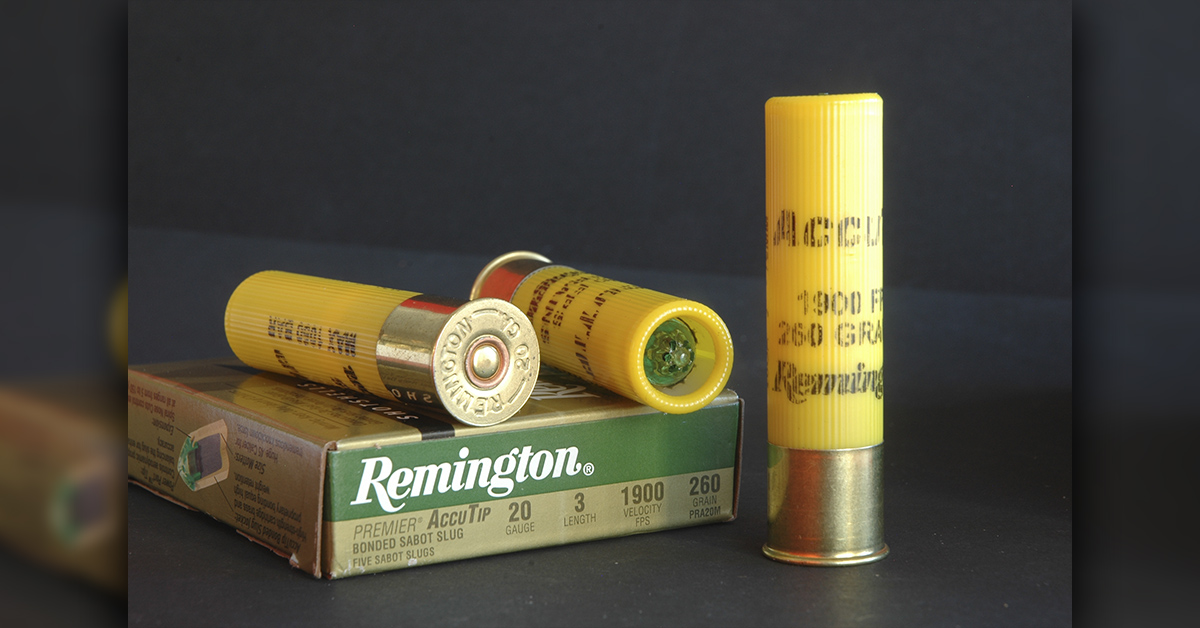
Most .35-caliber rifle rounds use .358 bullets, “but our number is .357,” says Winchester’s Nathan Robinson, “with allowable variance of -.003, per the .357 Magnum. Groove diameter in Legend rifles is .355; bullets exit at .355.” SAAMI specifies .355. “To ensure penetration in game, the Legend’s 180-grain Power-Point is stouter and 22 grains heavier than the heftiest bullet in our game loads for .357 revolvers.”
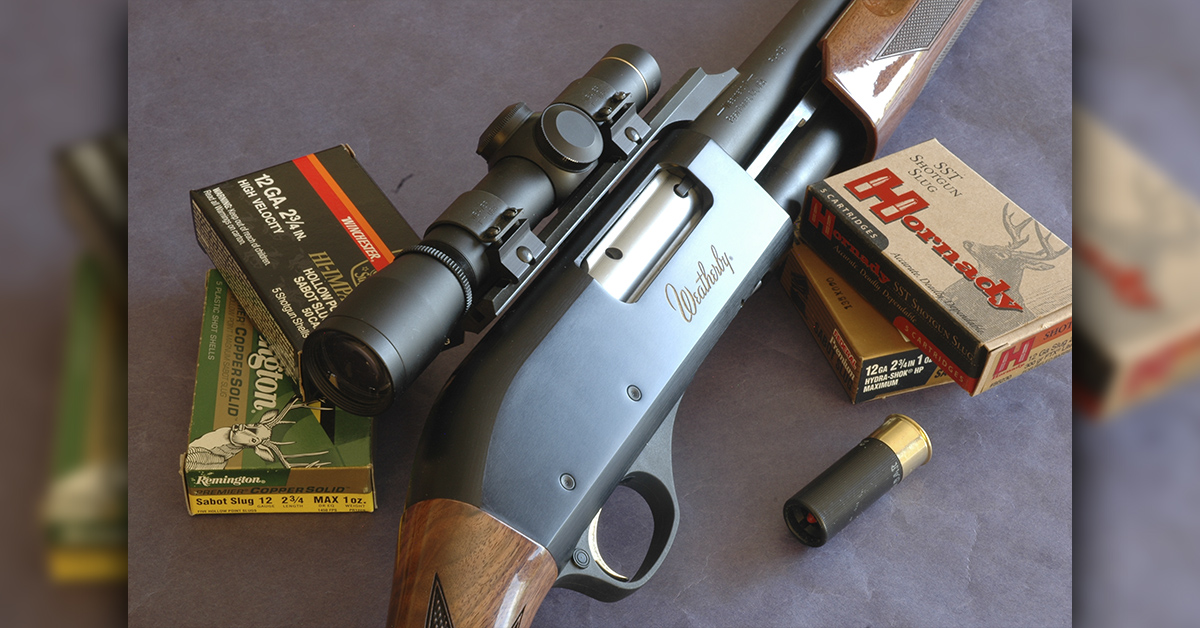
So, Which is Best?
Rifles and shotguns not only use different ammo, they feel different. Lightweight pump and auto shotguns are quick on target and with follow-up shots. A rifled “deer” barrel with sights or scope mount is a common option. Affordable and durable, these 12s and 20s gobble all manner of 2 ¾- and 3-inch loads.
Sweet on lever-actions? Exposed-hammer Winchester and Marlin rifles come in various weights, lengths, and profiles chambered for both old and new straight-walled cartridges. Recent models are scope-friendly. The second-hand market is as rich a source of lever rifles as it is of pump and auto shotguns.
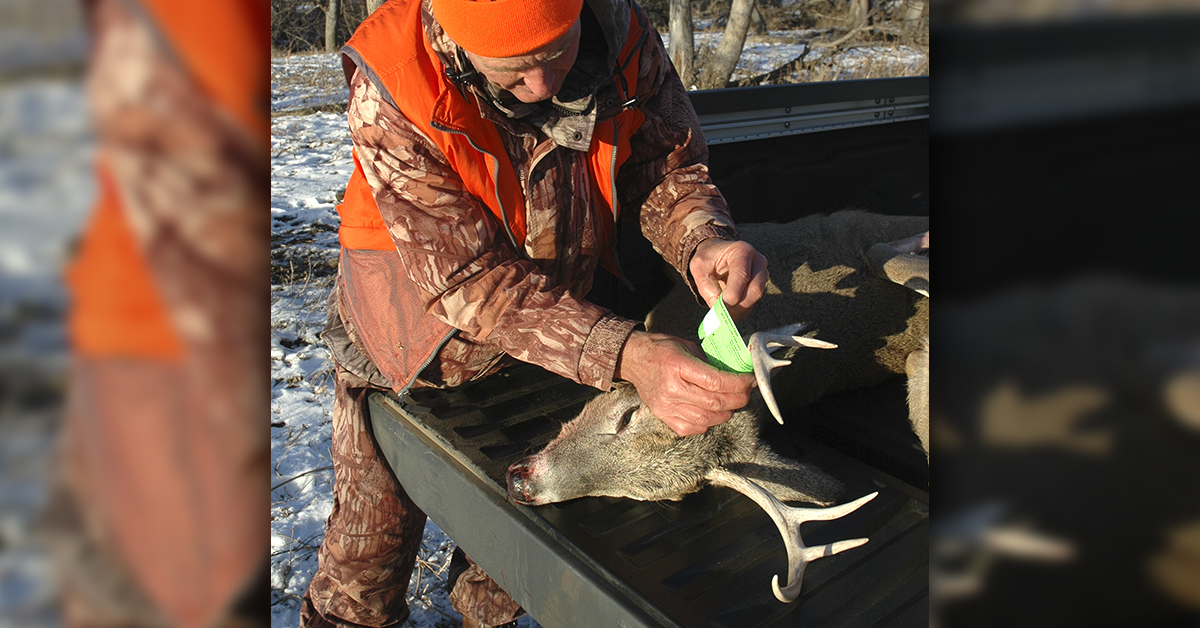
One benefit of straight-case rounds developed for deer hunting and similar use is mild recoil. A stiff 12-gauge slug load will rattle your molars. A rifle in .350 Legend bumps you no harder than a same-weight .243. Recoil increases with bullet heft and speed. Stock design affects felt recoil. A sharp-combed Winchester 1895 with frothy .405 loads ran me out of aspirin. I avoid the brutality of 3-inch 12-bore slug loads, but sabot ammo in a 3-inch 20-gauge sends 1,000 ft-lbs 150 yards without cracking my clavicle.
Contemporary wisdom has it you’ll print tighter groups with rifle bullets than with shotgun slugs. But in pump, autoloading, and lever-action mechanisms, straight-walled rifle cartridges and sabot slugs aspire to roughly the same level of accuracy: 2- to 3-inch groups at 100 yards. At 200, 3-MOA precision is a 6-inch knot, handily corralled by deer vitals. In woodlots harboring whitetails where I grew up, nearly all shots still come inside 100 yards—an easy reach for sabot slug loads and straight-walled rifle rounds. Pokes across a quarter-section of alfalfa are impractical for either. The effectiveness of shotgun slugs and bullets from straight-walled cases diminishes fast beyond 200 yards, as does your ability to hit a 6-inch target from field positions.
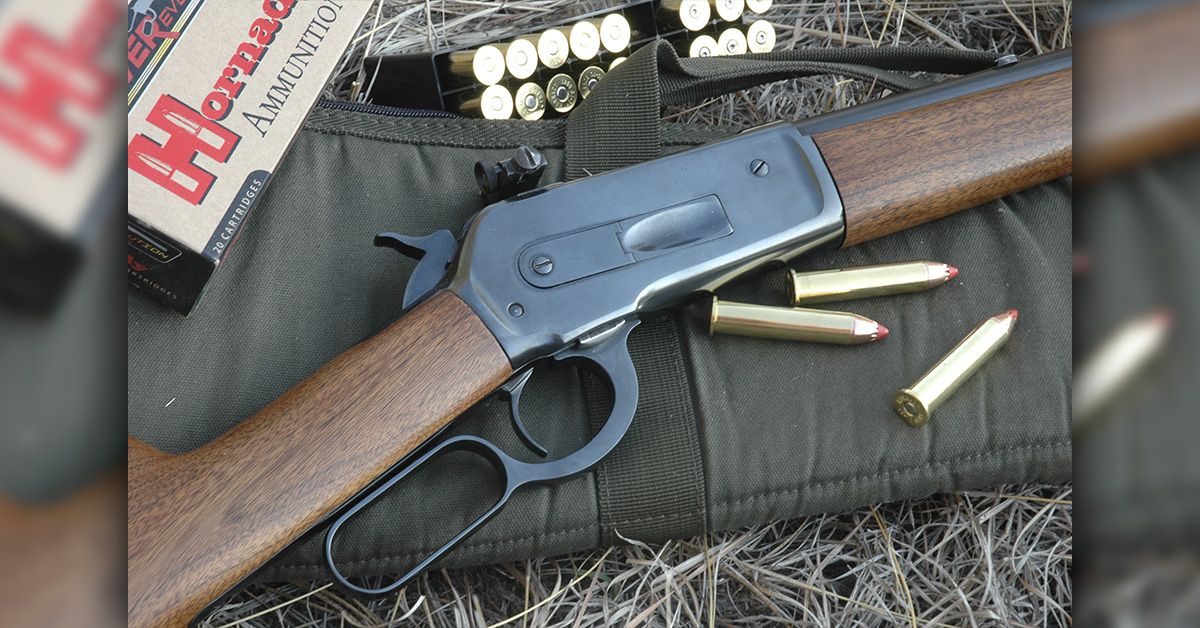
The most effective slug loads and straight-walled rifle rounds are a close match, ballistically, at the ranges most deer are killed. Your field marksmanship with the shotgun or rifle of your choice matters more than what’s in the chamber.
There’s Fine Print?
Before bouncing from your shotgun to a new rifle, you’re smart to double-check the hunting regs. The fine print under “legal deer cartridges” might include figures re: case/cartridge length, bullet diameter, and muzzle energy. It might exclude specific loads. Also, check the cost and availability of ammunition. My first 16-bore slug loads listed at $5 for a box of 25. Not now! You won’t find sabot loads in 16 gauge at any price. While .350 Legend and .44 Magnum ammo is quite affordable, not so .40-65 factory loads or fodder for your .401 or .405 Winchester.
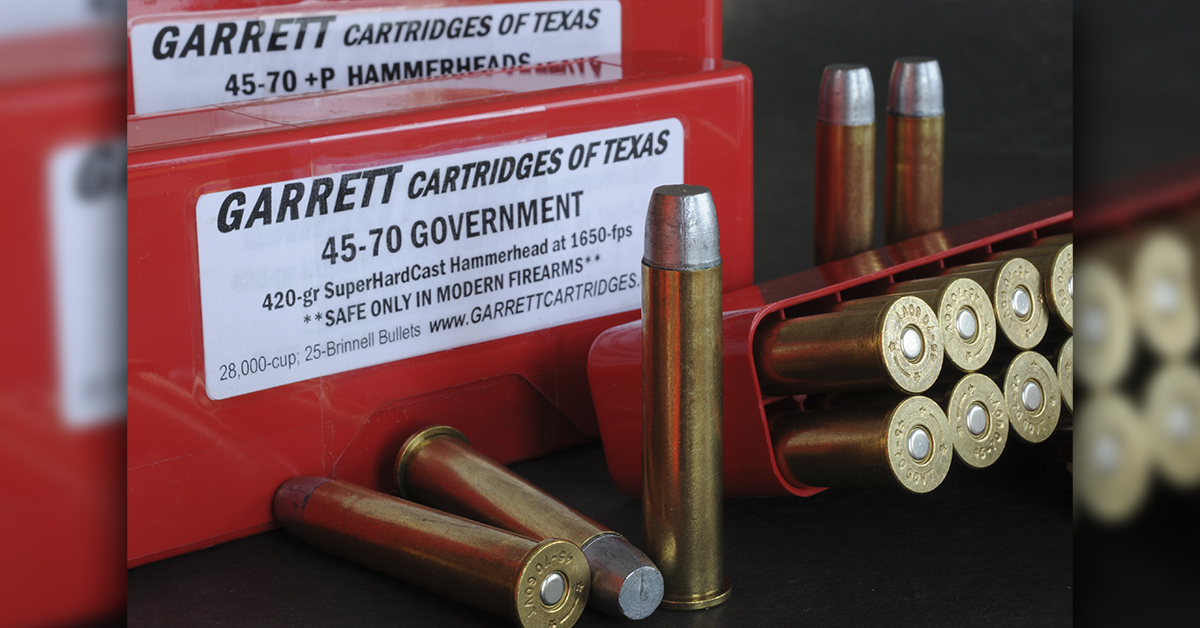
Ballistic Comparisons
Foster shotgun slug ballistics at a glance:
10-gauge Federal 1 ¾-oz. (766 grains) 3 ½-inch
- Velocity (fps): 1280 (muzzle), 1090 (50 yds), 970 (100 yds)
- Energy (ft-lbs): 2785, 2000, 1600
- Arc (in.): -1.5, 0, -6.8
12-gauge Winchester 1 ¼-oz. (547 grains) 3-inch
- Velocity (fps): 1760 (muzzle), 1310 (50 yds), 1040 (100 yds)
- Energy (ft-lbs): 3010, 1667, 1052
- Arc (in): -1.5, 0, -4.6
12-gauge Hornady 1-ounce (438 grains) 2 ¾-inch
- Velocity (fps): 1600 (muzzle), 1210 (50 yds), 997 (100 yds)
- Energy (ft-lbs): 2484, 1420, 965
- Arc (in): -1.5, 0, -5.9
16-gauge Federal 350-gr. 2 ¾-inch
- Velocity (fps): 1600 (muzzle), 1210, (50 yds), 1000 (100 yds)
- Energy (ft-lbs): 1990, 1135, 770
- Arc (in): -1.5, 0, -5.9
Sabot shotgun slug ballistics at a glance:
12-gauge Federal Premium 300-gr. Trophy Copper 2 ¾-inch
- Velocity (fps): 1900 (muzzle), 1530 (100 yds), 1380 (150 yds), 1240 (200 yds)
- Energy (ft-lbs): 2405, 1565, 1260, 1030
- Arc (in): -1.5, 3.3 , 0, -7.9
20-gauge Federal Premium 275-gr. Trophy Copper 3-inch
- Velocity (fps): 1900 (muzzle), 1500 (100 yds), 1340 (150 yds), 1200 (200 yds)
- Energy (ft-lbs): 2205, 1380, 1090, 875
- Arc (in): -1.5, 3.4 , 0, -8.3
12-gauge Hornady Custom Lite 300-gr. FTS 2 ¾-inch
- Velocity (fps): 1575 (muzzle), 1289 (100 yds), 1187 (150 yds), 1091 (200 yds)
- Energy (ft-lbs): 1652, 1107, 924, 793
- Arc (in): -1.5, 4.5 , 0, -10.7
20-gauge Hornady SST 250-gr. FTX 2 ¾-inch
- Velocity (fps): 1800 (muzzle), 1471 (100 yds), 1331 (150 yds), 1212 (200 yds)
- Energy (ft-lbs): 1798, 1201, 983, 815
- Arc (in): -1.5, 3.3 , 0, -8.2
12-gauge Winchester 375-gr. Dual Bond 2 ¾-inch
- Velocity (fps): 1800 (muzzle), 1470 (100 yds), 1280 (150 yds), 1140 (200 yds)
- Energy (ft-lbs): 2697, 1800, 1350, 1075
- Arc (in): -1.5, 3.3 , 0, -8.2
20-gauge Winchester 260-gr. Partition Gold 3-inch
- Velocity (fps): 1850 (muzzle), 1512 (100 yds), 1360 (150 yds), 1230 (200 yds)
- Energy (ft-lbs): 1976, 1320, 1048, 860
- Arc (in): -1.5, 3.3 , 0, -8.0
Strait-case rifle ballistics at a glance:
.350 Legend (Winchester 150 Deer Season XP)
- Velocity (fps): 2325 (muzzle), 1968 (100 yds), 1647 (200 yds), 1373 (300 yds)
- Energy (ft-lbs): 1800, 1289, 903, 628
- Arc (in): -1.5, 0, -7.6, -28.1
.38-55 (Winchester 255-grain Power-Point)
- Velocity (fps): 1320 (muzzle), 1190 (100 yds), 1091 (200 yds), 1018 (300 yds)
- Energy (ft-lbs): 987, 802, 674, 587
- Arc (in): -1.5, 0, -23.7, -76.5
.375 Winchester (Winchester 200-grain Power-Point)
- Velocity (fps): 2200 (muzzle), 1841 (100 yds), 1526 (200 yds), 1268 (300 yds)
- Energy (ft-lbs): 2150, 1506, 1034, 714
- Arc (in): -1.5, 0, -9.5, -34.1
.44 Magnum (Federal 240-grain JHP)
- Velocity (fps): 1760 (muzzle), 1387 (100 yds), 1123 (200 yds), 978 (300 yds)
- Energy (ft-lbs): 1651, 1025, 672, 509
- Arc (in): -1.5, 0, -16.8, -60.9
.444 Marlin (Hornady 265-grain FTX)
- Velocity (fps): 2325 (muzzle), 1971 (100 yds), 1654 (200 yds), 1381 (300 yds)
- Energy (ft-lbs): 3181, 2286, 1609, 1123
- Arc (in): -1.5, 0, -9.3, -32.2
.45-70 Gov’t. (Remington 405-grain Core-Lokt Softpoint)
- Velocity (fps): 1330 (muzzle), 1169 (100 yds), 1056 (200 yds), 978 (300 yds)
- Energy (ft-lbs): 1590, 1228, 1002, 860
- Arc (in): -1.5, 0, -24.5, -80.2
.45-70 Gov’t. (Hornady 325-grain FTX)
- Velocity (fps): 2000 (muzzle), 1685 (100 yds), 1413 (200 yds), 1197 (300 yds)
- Energy (ft-lbs): 2886, 2049, 1441, 1035
- Arc (in): -1.5, 0, -11.1, -41.2
.450 Bushmaster (Federal 300-grain softpoint)
- Velocity (fps): 1900 (muzzle), 1602 (100 yds), 1346 (200 yds), 1153 (300 yds)
- Energy (ft-lbs): 2405, 1708, 1208, 885
- Arc (in): -1.5, 0, -12.2, -43.7
.450 Marlin (Hornady 325-grain FTX)
- Velocity (fps): 2225 (muzzle), 1887 (100 yds), 1587 (200 yds), 1332 (300 yds)
- Energy (ft-lbs): 3572, 2570, 1816, 1280
- Arc (in): -1.5, 0, -9.7, -33.9



